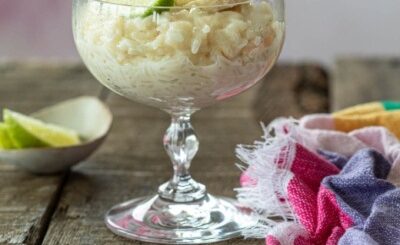Tangerine vs Clementine: What Are Their Differences?

Tangerines and clementines are citrus fruits that are often confused with one another. Both fruits are hybrids of mandarin. They contain a variety of nutrients, are generally low in calories, and are sweet in flavour. Tangerines and clementines are closely related. However, they are two separate citrus fruits with some notable differences. In this article, we will examine the key similarities and differences of these two sweet mandarin oranges.
What are Tangerines?
Tangerines are bright oranges that have slightly tougher skin. They are normally tougher to peel compared to clementines. They are less sweet and a bit sourer. They are often labelled as mandarins. However, they are a subgroup or hybrid of mandarins.
What are Clementine Fruits?
The clementine fruit is a hybrid of sweet orange and mandarin orange. Of the two varieties, clementines are sweeter and very strong immune boosters. They have a red-orange skin, which is smooth. They are easier to peel compared to tangerines.
Key Similarities
The first key similarity between these two citrus fruits is they share Mandarin origin. They are both members of the Mandarin orange family. Although they share the same lineage, clementine fruits are a specific variety of the Mandarin orange.
Clementines and tangerines are small and round with a bright orange peel. However, tangerines are slightly larger compared to clementines. On average, both fruits have a diameter that ranges from 5 to 10 centimetres. Similarly, they both have easy-to-peel skin for convenient snacking.
Both clementines and tangerines have sweet flavours but the latter is a bit tart. The difference in sweetness is usually subtle.
The two citrus fruits have almost similar nutritional values that are great for replenishing the body after working out on a treadmill or exercise bike. For starters, both citrus fruits are low in calories and fats, which makes them a suitable post-workout snack after running on a treadmill or cycling on an exercise bike. Instead of weighing you down, they will help boost your energy levels.
Tangerines and clementines have natural sugars that can help restock glycogen after working out. Similarly, both fruits have a high water content that can help rehydrate the body post-workout.
The Points of Difference
While both fruits have many similarities, there are some key points of difference. The first and most obvious difference is the appearance.
Tangerines are a bit larger than clementines and are darker reddish-orange. The smaller variety, clementines, are brighter orange. Tangerines are also flatter whereas clementines are more oval. Furthermore, tangerines are a bit tougher to peel than clementines.
As we mentioned earlier, both fruits are sweet. However, if you pay close attention to the taste, you will note that tangerines have a subtle tartness to their sweetness.
Tangerine citrus fruits have seeds but there are a few types that lack seeds. The seeds of these fruits are safe for ingestion. On the other hand, clementines are typically seedless but not truly seedless. Some clementine varieties are completely seedless, while some contain at least ten seeds.
What are their Health Benefits?
Tangerines and clementines are a rich source of essential nutrients.
● Tangerines
These citrus fruits are rich in vitamin C along with vitamin A in moderate amounts. Research also suggests that the peels contain an antioxidant or super-flavonoid that can lower cholesterol. The abundance of vitamin C makes tangerines suitable fruits for boosting skin and eye health. According to studies, vitamin C helps with the production of collagen and prevents the effects of prolonged exposure to the sun. There is also evidence that vitamin C helps delay macular degeneration and cataracts.
● Clementines
These citrus fruits are also rich in antioxidants that help reduce inflammation. According to research, anti-inflammatory foods can help prevent cancer that is caused by excessive inflammation. Clementines are also rich in flavonoids, which play a crucial role in preventing macular degeneration that develops with age. Additionally, clementine fruits contain Beta-cryptoxanthin, which is a carotene for supporting cell growth, vision, and immune function.
What are the Downsides of Citrus Fruits?
Although citrus fruits like tangerines and clementines are convenient for post-workouts and other occasions, there are downsides to consuming lots of them. Research says that these fruits can cause cavities, which is the major downside. They contain acid that can erode tooth enamel. The effect can be significant if you expose your teeth to the juices more frequently.
The Bottom Line
There are many similarities between these two citrus fruits than the differences. The bottom line is they are both excellent post-workout snacks for those using a treadmill, exercise bike, or any other indoor training equipment. They are low in calories and fat, contain natural sugars, rich in vitamin C and flavonoids, easy to digest, and are good for hydration. However, you should be aware of the possible effect citrus fruits can have on your tooth enamel – they can cause cavities.











